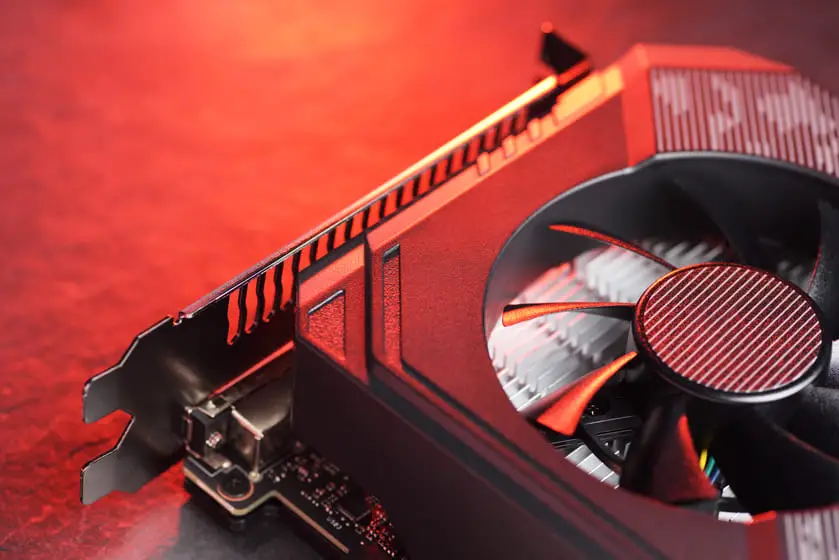When it comes to computer systems, the cooling system is one of the most important aspects. It’s a complex system that can have an effect on your motherboard, CPU, and GPU if it fails or begins to show signs of wear. The good news is you can take steps to prevent this from happening by learning how to test GPU fans and GPU stress test them often.
How to Test GPU Fans & How to Troubleshoot the Issue if they are not spinning
Thankfully, there are a number of different ways to test GPU fans and troubleshoot the issue. You can install GPU-Z on your computer to see if fan speeds have changed since you last checked them or run full GPU stress tests that will focus on high temperatures in particular.
The first step is turning off any overclocking software so it doesn’t interfere with testing GPU fans and then launching both programs one after the other. Once they’re running, GPUz should be able to detect your graphics card once it reaches its maximum operating temperature (usually 80 degrees Celsius). If not, try defragmenting your hard drive which may improve performance by resolving.
A couple of software that can be used to stress & temperature test for GPU Fans:
- SpeedFan
- EasyTune 5
- Argus Monitor
- HWMonitor
- HWiNFO
- ZOTAC FireStorm
- Open Hardware Monitor
- MSI Afterburner
- Corsair Link
- Thinkpad Fan Controller (TPFanControl)
- smcFanControl
- Gigabyte EasyTune
- AVG Tuneup
- AMD Radeon (For AMD Graphic Cards Only)
Check for Grime
- If you find that your GPU fan isn’t spinning, and it’s not a hardware issue because of the GPU stress test, then check for grime.
- Dust buildup on the GPU heat sink can slow down cooling so be sure to dust off any fans or fins with compressed air every few months.
Remember that your graphic card’s fan(s) will not spin unless it reaches a threshold temperature. Passive cooling mode allows the graphics card to reduce system noise during its initial start-up, among other things.
Check the Power Source:
- If the GPU has a power source, make sure it’s not faulty or broken and check for any visible damage such as cuts/wires pulled out of place.
- Make sure you have enough free space around your GPU so there isn’t too much heat build-up from other components
Check for GPU Failure or Misconfiguration:
If the GPU fan still isn’t spinning, then it may be a sign of GPU failure or misconfiguration.
Some graphics cards won’t spin until they hit a specific temperature and you can check this in GPU-z software by looking for ‘Fan RPM’ and checking that your card is ticking up into its higher operating temperatures (usually around 80 degrees Celsius). This means there’s no need to continue troubleshooting if your GPU stress test was successful but don’t forget to dust off any fans with compressed air so airflow through the heat sink stays consistent.
What is a good gaming fan speed?
A good gaming fan speed is around 1200 to 2400 RPM. This will ensure that your GPU fans are spinning efficiently and keeping the GPU cool enough without being too loud for you or others in the room.
Why are my GPU fans not spinning?
The GPU is just idling.
Turn off any overclocking software. GPUz should detect your graphics card once it reaches its maximum operating temperature.
PCIe Power Isn’t Plugged In.
When you install a graphics card, make sure that the power and all six data pins are properly connected to your graphic card.
Test It on Another PC
If the GPU fan still isn’t spinning, then try testing it on another computer. There may be a problem with your motherboard or faulty graphics card.
Check If your GPU’s fans need oiling?
GPU manufacturers recommend the use of oil once every six months to a year. You can either purchase an air duster and spray it on, or you can buy an aerosol GPU fan lubricant from the hardware store.
Drivers and GPU Software
You may need to update your graphics card drivers. Check to ensure that you have downloaded and installed the latest version
Replace The Fan
If you’ve checked all of the above and your GPU fan is still not spinning, then it’s time to replace those fans, if you are not computer savvy, then it is a good idea to contact a tech store professional for assistance installing the GPU fan.
Is It Time for An Upgrade?
If replacing the GPU fans still did not fix your overheating problem, then it may be time for an upgrade.
Final thoughts
We hope this article has helped you understand how to test GPU fans and what the signs of a faulty fan are. If your fans are still not working, after trying all these troubleshooting steps, then it may be time for an upgrade or contact a professional for assistance installing the new GPU fan.

